In a sea of wooden boats that are out of reach for many of us, here is one that offers some respite—Dad’s Ol’ Outboard Skiff. She’s the brainchild of Michigan builder Mike Kiefer, who has been building boats and teaching wooden boat building at the Great Lakes Boatbuilding Company, for well over 20 years. Dad’s Ol’ Outboard Skiff is a glued-lapstrake plywood constructed boat with steam-bent sassafras frames and a mahogany transom. Virtually anyone with a little ambition and modest skills can build her. She offers a lot of pride for the effort.
On a cool Iowa morning in mid-July, my friend George Jepson and I took the boat out for a spin on Lake MacBride. A fresh breeze off the eastern Iowa prairie kicked up a few riffles on the water as George and I motored along the pastoral, grassy shore. Dad’s Ol’ Outboard Skiff is the type of boat that conjures images of summers on the lake and Dad in his high-waist shorts. An archetypal, 1950s-style family cottage boat, it’s handsome, roomy, maneuverable, and built icebreaker-tough. With outstanding initial stability and an excellent aptitude for tracking, she is a safe and enjoyable boat, designed and built for protected waters.
Dad’s Ol’ Outboard Skiff has an LOA of 14′ and a 5′ beam. She weighs approximately 250 lbs and draws about 6″ in fresh water, a dash less in salt. Though she may look dainty perched on her trailer, step aboard, and you’ll see that she has the feel of a much larger boat. Get her on the water, and you’ll be pleasantly surprised at her performance, too. These are some of the great achievements of the design.
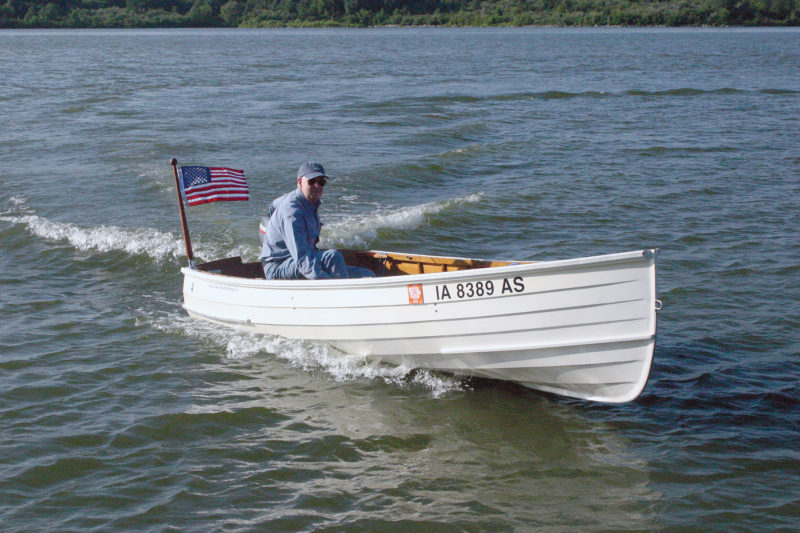 Photo by Karen Wales
Photo by Karen WalesThis is not your father’s outboard. Or is it? Builder Mike Kiefer and designer Ken Workinger created Dad’s Ol’ Outboard Skiff to have the look and feel of boats that were the norm during the 1950s. Glued-lapstrake plywood construction, the type already a coastal favorite, has proven to be a welcome alternative in freshwater areas, too.
Mike Kiefer is a boatbuilder’s boatbuilder. In 1978, having decided to enter the trade, he embarked on a tour of New England boatbuilding shops. At Lowell’s Boatshop in Amesbury, Massachusetts, builder Jim Lowell encouraged Mike to get a copy of John Gardner’s Dory Book and to build anything in there. He began with the Swampscott dory and has been building ever since. He opened his own shop, Great Lakes Boatbuilding Company, in South Haven, Michigan, in 1986.
Inspired by the family watercraft that companies like Dunphy, Wolverine, Larsen, and Thompson used to turn out by the hundreds, Dad’s Ol’ Outboard Skiff captures the romance of an earlier, simpler time. Romantic overtones aside, the builder is also pragmatic in his approach to serving today’s boat owner. Kiefer says, “I wanted this boat to be a little deeper and wider, since folks today are generally just bigger. The transom is fairly wide and gives good initial stability. Outboard bilge stringers, port and starboard, help with directional stability. It is a pretty thing on the water and scoots with the right horsepower.” Because Kiefer is also a boatbuilding instructor, he requires most of his boats to hold potential as projects for his classes. That practicality came into play in the design spiral of Dad’s Ol’ Outboard Skiff.
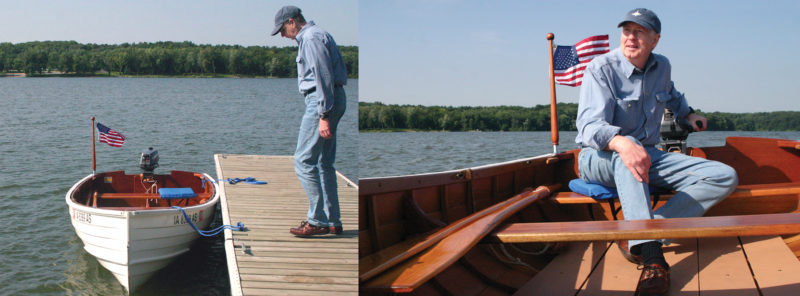 Photos by Karen Wales
Photos by Karen WalesMeet George Jepson. At 6′ 3″, he seems to dwarf Dad’s Ol’ Outboard Skiff when she’s dockside. But, once he’s aboard, it’s clear that the boat is roomy and comfortable, even for a man of George’s size.
I admire his humility. Some builders, by virtue of the fact that they have built a lot of boats, think that they are also qualified boat designers. While a small number of builders have had good results with this empirical approach to the design process, many more have not. Mike Kiefer knows that having a dream in your head is a long way off from having a boat that accomplishes your goals. So, in order to get it right, he asked designer Ken Workinger to help turn his parameters into a working plan. The result is a lovely and seaworthy boat that handily accomplishes the builder’s intentions. She is deceivingly larger than she looks. At 6′ 3″, owner George Jepson appreciates every inch of roominess afforded to him.
Dad’s Ol’ Outboard Skiff is a traditional-looking lapstrake boat, built with okoume plywood, using glued-lapstrake plywood construction. This type of construction is a particularly good choice for small boats that are to be used in fresh water. High-quality marine plywood is made from straight and tightly grained, stable woods. There is also a high glue content between veneers. Add to that the clear-coating of epoxy that occurs just before painting, and you have a construction type that is extremely rot-resistant.
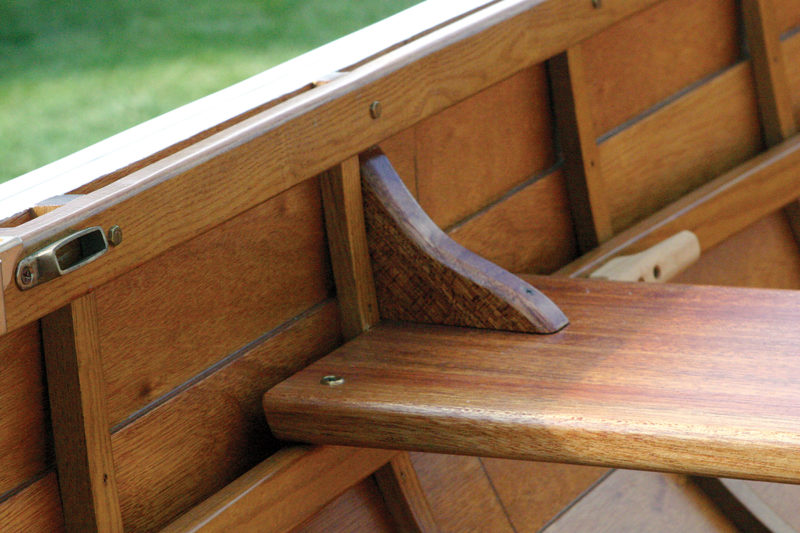 Photo by Karen Wales
Photo by Karen WalesCalled “A Sweet Alternative,” sassafras is the builder’s first choice for structural members like frames, risers, and gunwales. “Sassy” is more decay resistant and more limber than white oak. And, Kiefer adds, “It smells like root beer when you cut it.” What’s not to like?
I wondered why a glued-lapstrake plywood boat would also require steam-bent frames. After all, the planking seam glue joints already provide longitudinal strength and good overall stiffness. To me, installing keel-to-sheer frames on top of that seemed a belt-and-suspenders approach. The designer says that this element is mostly for the benefit of students. Bending-in steamed frames provides new boatbuilders with a fun and important lesson that transfers to more complicated work. Kiefer nearly always factors in a design’s suitability as a teaching tool in his classes. While not a common theme in glued-lapstrake plywood construction, the sassafras frames add stiffness to the hull and heighten the traditional look of the boat.
For such a round-appearing boat, Dad’s Ol’ Outboard Skiff is remarkably stable. Absent is the roly-poly feel that usually accompanies a round bottom. This impressive initial stability is a function of a combination of elements, the primary one being her deceptively clever shape. The lines indicate how her belly nearly flattens out for a good run of her length below the turn of the bilge. That, combined with her generous beam, provides the feel of a much larger, cushier boat. Stepping aboard, she feels solid underfoot. And she remains steady, even as a big fellow like George Jepson settles in at the helm. These elements make it an exceptionally good choice for family use…just as the name implies.
With all that, she handles extremely well; she can sweep around a turn with the grace of a young lady sashaying about her partner at a square dance. This agility is due in part to Kiefer’s careful placement of outer hull stringers. Found near the lap of the first and second broadstrakes on the outer hull surface, these outboard “bilge stringers,” as Kiefer calls them, run from about amidships aft, all the way to the transom. In addition to providing better tracking, the bilge stringers protect the bottom when the boat is dragged onto a beach.
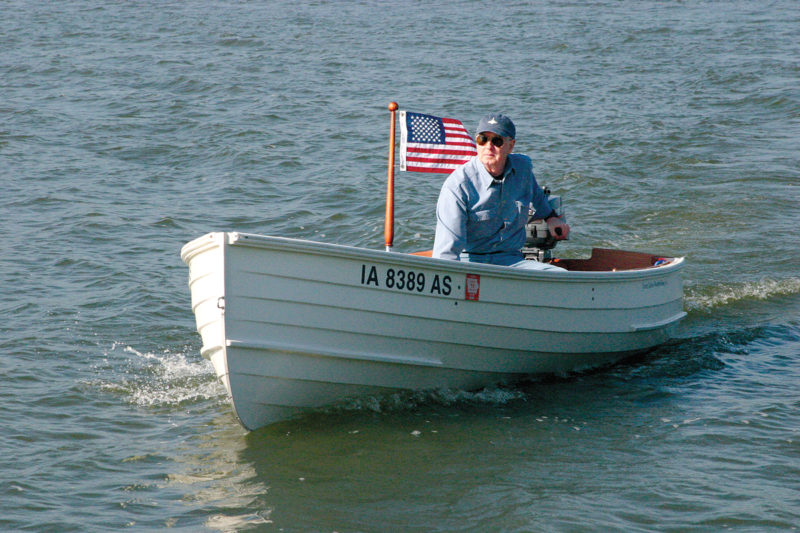 Photo by Karen Wales
Photo by Karen WalesSpray rails and outboard “stringers” have been added to the outer hull, fore, aft, and below. Made to reduce spray, protect the hull, and improve tracking ability, they give the boat a saltier look too.
Located farther up each side at the aft area of the hull are two more “stringers” that designer Ken Workinger refers to as the quarter fenders. Like the bilge stringers, the quarter fenders also serve a dual purpose. Because Dad’s Ol’ Outboard Skiff has tumblehome, those areas of the hull that protrude beyond the sheer are vulnerable to damage from pilings, piers, and other boats. Workinger says that the quarter fenders protect the hull in these regions. He adds that they also manage unwanted spray that may be migrating up the hull. Finally, Kiefer placed a third set of stringers (spray rails) at the forward end of the boat. Their sole purpose is to deflect spray from the cutwater area. These are much appreciated by frequent bow riders like me.
There is some friendly contention among builder, designer, and owner regarding the appropriate size outboard motor for Dad’s Ol’ Outboard Skiff. The builder feels that a 10–15-hp motor is just right for this boat. The designer commented that she’s “Fun to run with just an 8-hp motor.” Yet the owner likes his 3-hp motor just fine. My only personal experience with the skiff has been running her with the 3-hp motor. It was fine—it felt appropriate for quiet motoring, which is her purpose on Lake MacBride. However, I can appreciate how a larger outboard might have gotten her up and out of the water more efficiently. I figure that puts me in the builder and the designer’s camp. Whatever floats your boat…
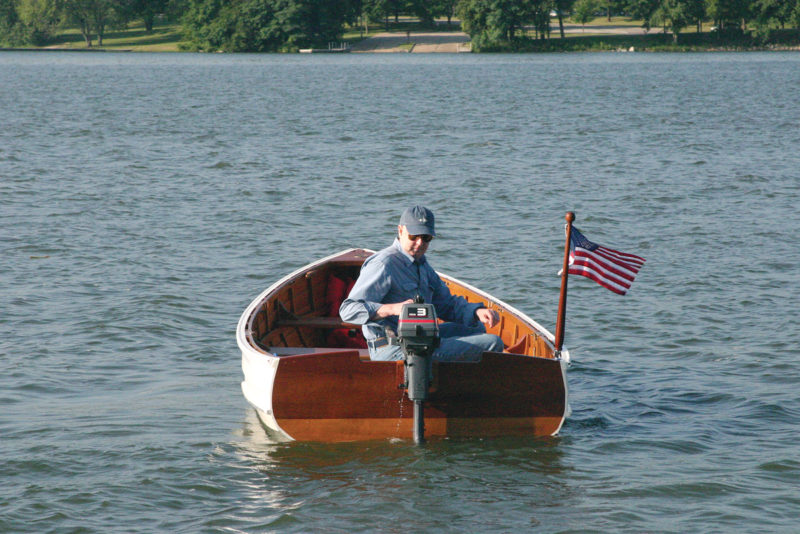 Photo by Karen Wales
Photo by Karen WalesTo each his own…motor. For calm motoring, the owner prefers his 3-hp outboard. However, the builder, designer, and author concur that something ranging from 8 to 15 hp would give her more zip.
All in all, I am charmed by Dad’s Ol’ Outboard Skiff. She has an understated elegance that allows her to travel in any boating circle. Her roots are honest, her design well thought out. Produced by a longtime builder who has mastered his craft, she is destined to become a Midwestern classic—a yacht for the ordinary citizen.
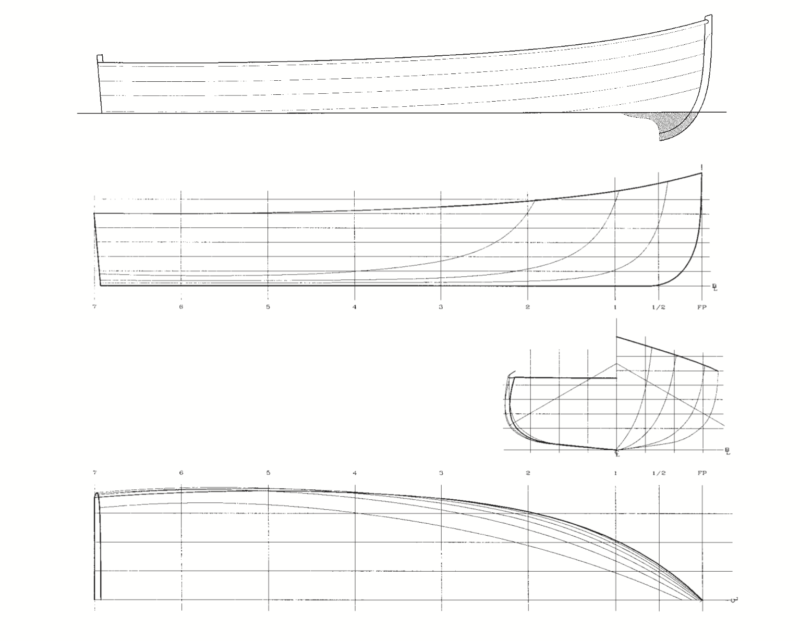
Dad’s Ol’ Outboard Skiff is a lot of boat for her size. Her beaminess and expansive, almost flat bottom give her the wherewithal to carry a large payload of picnickers and remain unperturbed. Her plumb bow, the restrained sweep of her sheer, and nearly vertical transom cap off her classic look.
Update: This review of Dad’s Ol’ Outboard Skiff appeared in Small Boats 2008; plans are still available from Ken Workinger. For details, email him at jollydogboats@gmail.com.
Is there a boat you’d like to know more about? Have you built one that you think other Small Boats Magazine readers would enjoy? Please email us!
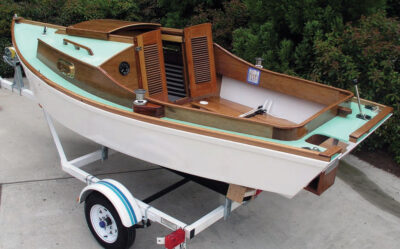
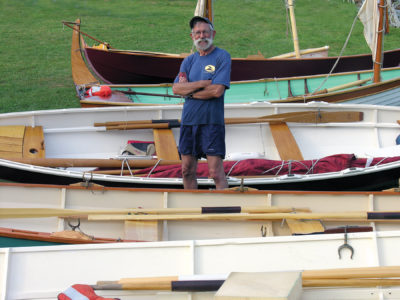
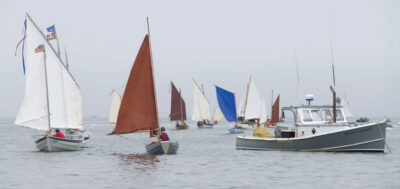
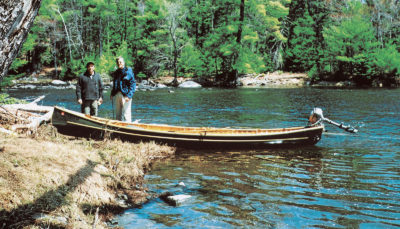
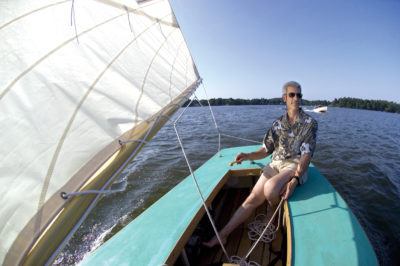
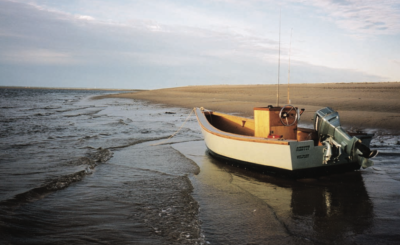
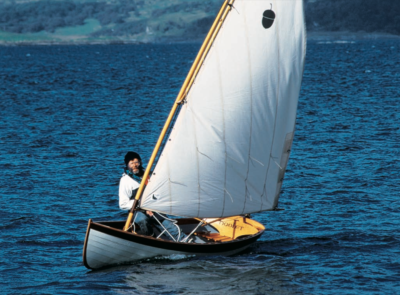
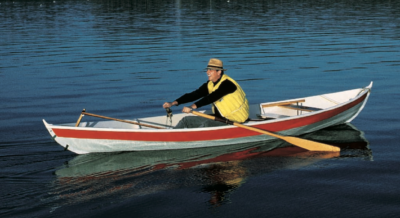
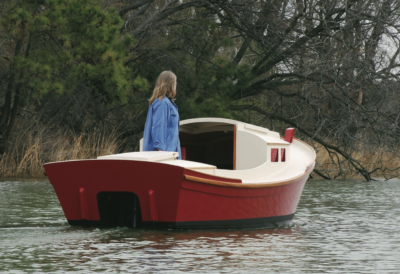
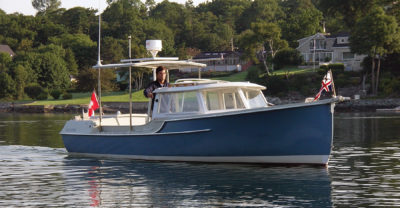
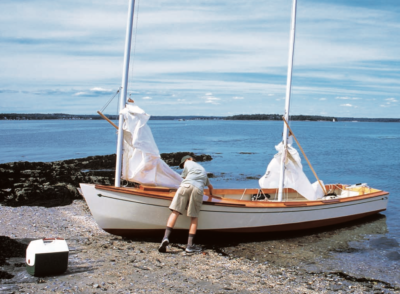
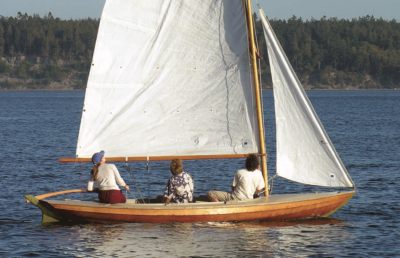
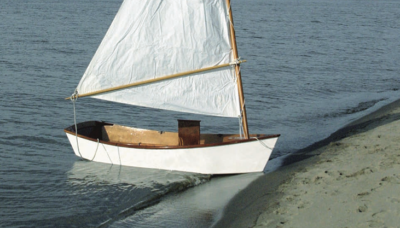
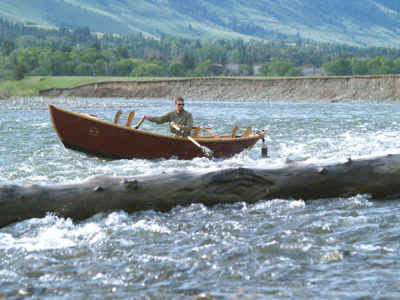

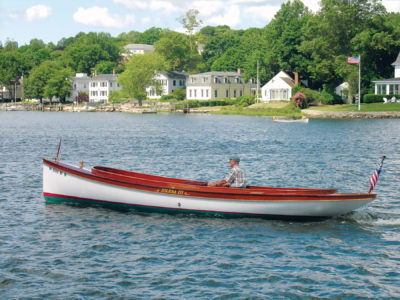
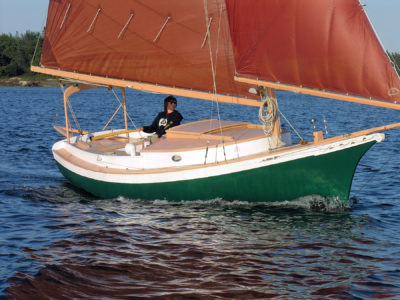
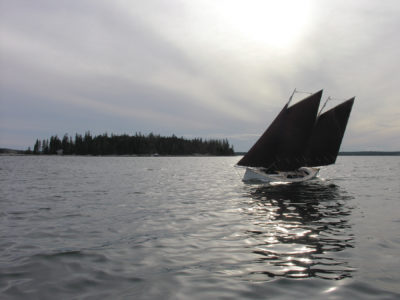
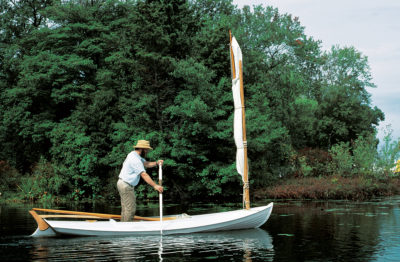
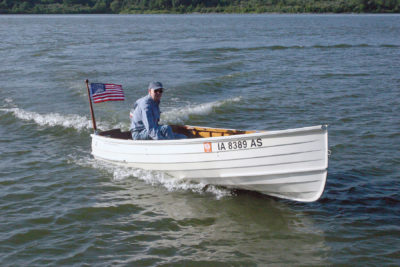
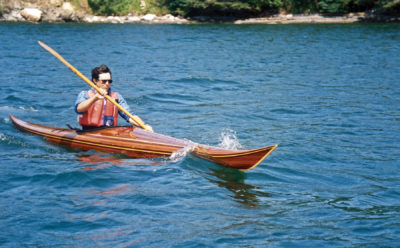
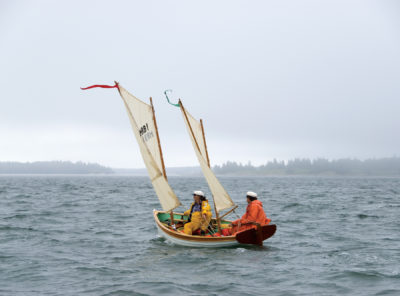

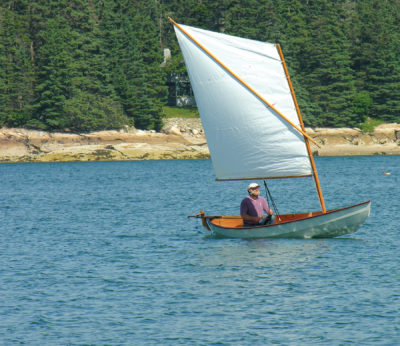
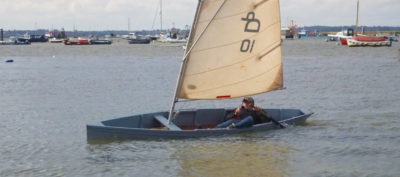
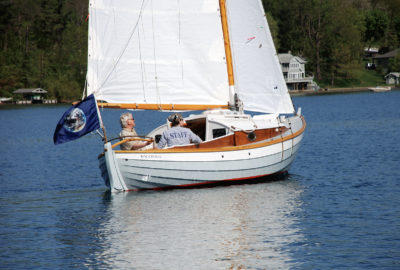
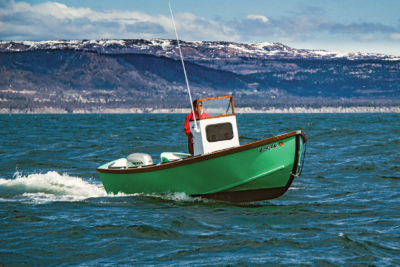
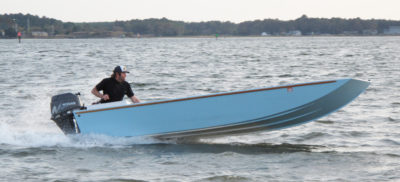
Too small. I’ve owned a lot of skiffs and 16′ is the sweet spot with these boats for any kind of rough water.
A search for the plans for this boat comes up empty. The website jollydogboats@charter.net did not appear to be up and running.
We’ve been providing the Profiles that have only appeared in print as an extra feature and historical reference. In this case, the web site for the company that was producing the skiffs for sale appears to have been taken over by another entity. We recently updated the email address for the designer and confirmed that plans are still available.
Editor
To anyone looking for plans, Ken Workinger, the designer, can be reached via email to jollydogboats@gmail.com. I purchased plans from him last year.
I emailed Ken twice at the above address, never heard back. Anyone else looking for similar designs might check out Paul Gartside’s #189.
This story brought me up short! It looks exactly like a mini-version of a 22’x 8′ lapstrake skiff I designed and built about a dozen years ago of spruce planking, fir and oak backbone, but with sawn frames, for salmon set-net fishing on Bristol Bay in Southwest Alaska. It was amazingly fun to build, but I decided to sell it as I was close to retirement and because I’d put so much work into it that I didn’t want to see it get bashed up against docks and tenders in the frequently rough waters of the bay. Regarding Greg Petty’s 2020 comment about this boat being too small, I delivered fish with a 14′ skiff to a cash buyer in 4′ waves. I was wishing it was longer, but the boat did fine, although this was a “don’t do this at home” kind of situation. Thanks for a great article! It brought back happy memories of building one almost exactly like it, shape-wise, if a bit larger.